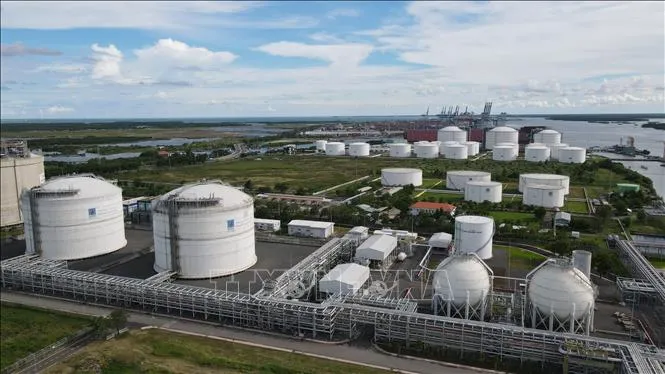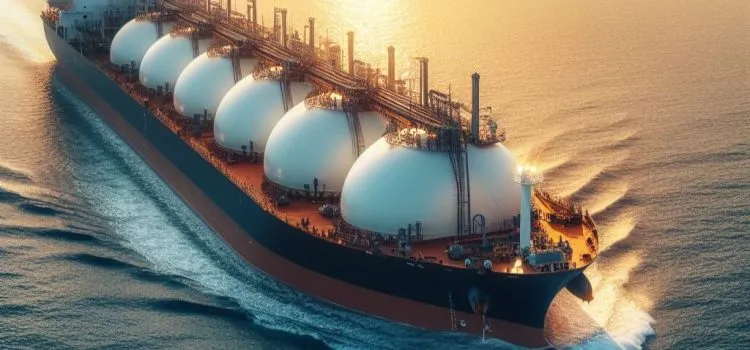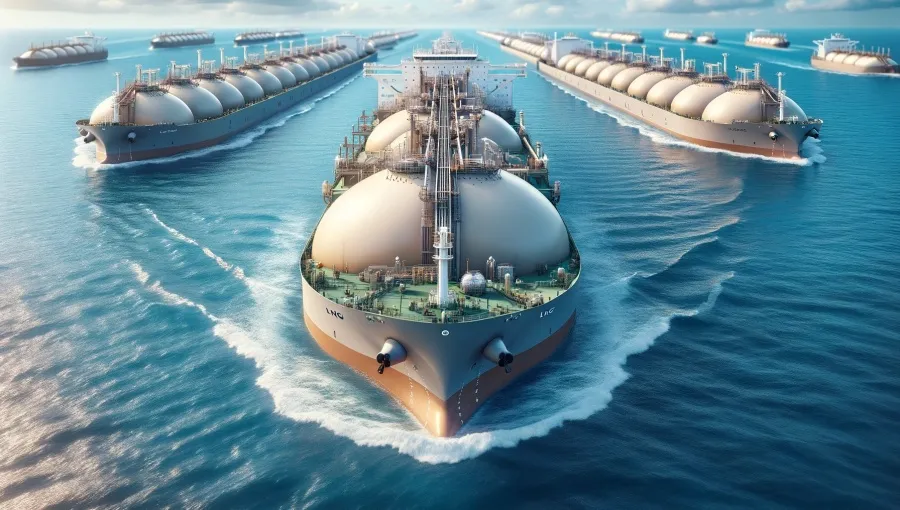Introduction
In the ever-evolving landscape of the energy sector, Liquefied Natural Gas (LNG) plays a pivotal role as a cleaner alternative to fossil fuels. The vt1000 in subzero lng environment is marked by its complex operations, especially when it comes to handling the fuel in extreme conditions. The VT1000 technology has emerged as a vital player in ensuring efficient and safe LNG operations, particularly in subzero environments. This article delves into the significance of the VT1000 within the context of subzero LNG environments, exploring its functionality, advantages, challenges, and future prospects.
Understanding vt1000 in subzero lng environment
What is LNG?
Liquefied Natural Gas is natural gas that has been cooled to a liquid state at around -162°C (-260°F). This process reduces the gas volume to about 1/600th of its gaseous state, facilitating efficient storage and transportation. LNG is primarily composed of methane (CH4) and is considered a cleaner alternative to traditional fossil fuels, emitting less carbon dioxide when burned.
Challenges of Subzero LNG Operations
Operating LNG facilities in subzero environments presents unique challenges:
- Material Properties: Extreme cold can lead to brittleness in materials used in LNG storage tanks, pipelines, and other components. This can compromise the integrity of systems, leading to potential failures or leaks.
- Thermal Efficiency: Maintaining LNG at such low temperatures is critical to preventing it from vaporizing. Efficient insulation and thermal management systems are essential to minimize heat transfer and ensure safe operations.
- Operational Reliability: Equipment and machinery must function reliably under extreme cold, which may affect the efficiency and safety of LNG operations. Any downtime can lead to significant financial losses.
- Safety Concerns: The handling of vt1000 in subzero lng environment poses inherent risks due to its flammability and the cold burns associated with direct contact with the liquid. Ensuring safety in subzero conditions is paramount for LNG facilities.
VT1000 Technology: An Overview
What is VT1000?
The VT1000 is an advanced monitoring and control technology specifically designed for LNG operations. While the precise specifications of the VT1000 can vary, its primary focus lies in optimizing the efficiency and safety of LNG handling in extreme conditions. This technology can include sensors, control systems, and data analytics capabilities to provide real-time monitoring and decision-making support for operators.
Key Features of VT1000
- Real-Time Monitoring: The vt1000 in subzero lng environment offers continuous monitoring of critical parameters, including temperature, pressure, and flow rates, ensuring optimal conditions are maintained.
- Data Analytics: Advanced data analytics capabilities allow operators to make informed decisions based on real-time data, improving response times to any potential issues.
- Safety Protocols: VT1000 systems are equipped with safety protocols to prevent leaks, manage pressure fluctuations, and ensure the integrity of LNG operations.
- Adaptability: The technology is designed to function effectively in subzero conditions, providing reliable performance in extreme environments.
The Impact of Subzero Conditions on LNG Operations

Material Integrity and Durability
In subzero environments, the materials used in LNG infrastructure must withstand extreme temperatures without losing structural integrity. Traditional materials may become brittle, leading to increased risks of fractures and failures. The VT1000 technology is designed to monitor these critical factors, alerting operators to any potential material degradation.
Efficiency and Thermal Management
Efficient thermal management is essential for maintaining vt1000 in subzero lng environment in its liquid state. The VT1000 assists in monitoring insulation performance, detecting any heat transfer that could compromise LNG storage. By providing real-time data on thermal conditions, the VT1000 enables operators to implement corrective measures promptly.
Operational Reliability
Reliability in operations is crucial, especially in subzero conditions. Equipment failures can lead to significant downtime and financial losses. The VT1000’s continuous monitoring and alert systems help operators detect anomalies early, reducing the likelihood of unexpected shutdowns.
Advantages of VT1000 in Subzero LNG Environments
Enhanced Safety Measures
Safety is paramount in the LNG industry, particularly in extreme conditions. The VT1000 enhances safety through its robust monitoring capabilities. By providing real-time alerts for pressure fluctuations or temperature anomalies, the system enables operators to respond swiftly to potential hazards, mitigating risks associated with LNG handling.
Increased Operational Efficiency
The VT1000 optimizes operational efficiency by streamlining processes and reducing downtime. Real-time data analytics allow for predictive maintenance, enabling operators to identify potential equipment issues before they escalate. This proactive approach enhances overall productivity and reduces operational costs.
Improved Decision-Making
With access to real-time data, operators can make informed decisions based on accurate information. The vt1000 in subzero lng environment data analytics capabilities facilitate comprehensive reporting and trend analysis, allowing operators to optimize processes and improve efficiency continually.
Cost Savings
By enhancing safety, reliability, and efficiency, the VT1000 contributes to significant cost savings for LNG facilities. Reduced downtime and improved operational performance translate to higher profitability, making the technology a valuable investment for operators.
Case Studies: vt1000 in subzero lng environment in Action
Arctic LNG Facilities
One of the most notable applications of the VT1000 technology is in Arctic LNG facilities, where extreme cold poses significant challenges. In these regions, the VT1000 has been instrumental in ensuring the safe and efficient handling of LNG. For example, in a recent Arctic project, the VT1000 system was implemented to monitor storage tanks and pipelines, allowing operators to maintain optimal thermal conditions and prevent material degradation.
Subzero Storage Facilities
Another successful implementation of the VT1000 occurred in subzero LNG storage facilities. The technology enabled real-time monitoring of tank temperatures and pressures, alerting operators to any fluctuations that could impact LNG integrity. As a result, the facility reported a significant reduction in operational risks and improved overall efficiency.
Safety and Regulatory Considerations

Safety Protocols
The vt1000 in subzero lng environment incorporates various safety protocols to mitigate risks associated with LNG handling in subzero environments. These protocols include automated shut-off systems, emergency response measures, and regular safety audits to ensure compliance with industry standards.
Regulatory Compliance
LNG facilities are subject to strict regulations to ensure safety and environmental protection. The VT1000 technology assists operators in adhering to these regulations by providing comprehensive reporting and documentation of operational parameters. This ensures that facilities remain compliant with local and international standards.
Future Prospects of VT1000 Technology
Technological Advancements
The future of VT1000 technology looks promising, with ongoing research and development aimed at enhancing its capabilities. Innovations in sensor technology, data analytics, and materials science will likely improve the performance and reliability of the VT1000 in subzero LNG environments.
Industry Trends
As the demand for LNG continues to grow, so will the need for advanced technologies like the VT1000. The industry is moving towards more efficient and environmentally friendly practices, driving innovation in LNG operations. The VT1000 is positioned to play a significant role in this transition, ensuring safe and efficient handling of LNG in extreme conditions.
Potential Challenges
While the prospects for VT1000 technology are bright, challenges remain. The continued development of subzero LNG infrastructure will require significant investment in research and technology. Operators must also navigate regulatory complexities and ensure that their systems are adaptable to changing industry standards.
Conclusion
The VT1000 technology represents a crucial advancement in the safe and efficient handling of LNG in subzero environments. By addressing the unique challenges posed by extreme cold, the VT1000 enhances operational reliability, safety, and efficiency. As the vt1000 in subzero lng environment industry continues to evolve, the integration of advanced technologies like the VT1000 will be essential in meeting the growing demand for cleaner energy solutions. Through ongoing innovation and commitment to safety, the VT1000 stands poised to shape the future of LNG operations in extreme conditions.
